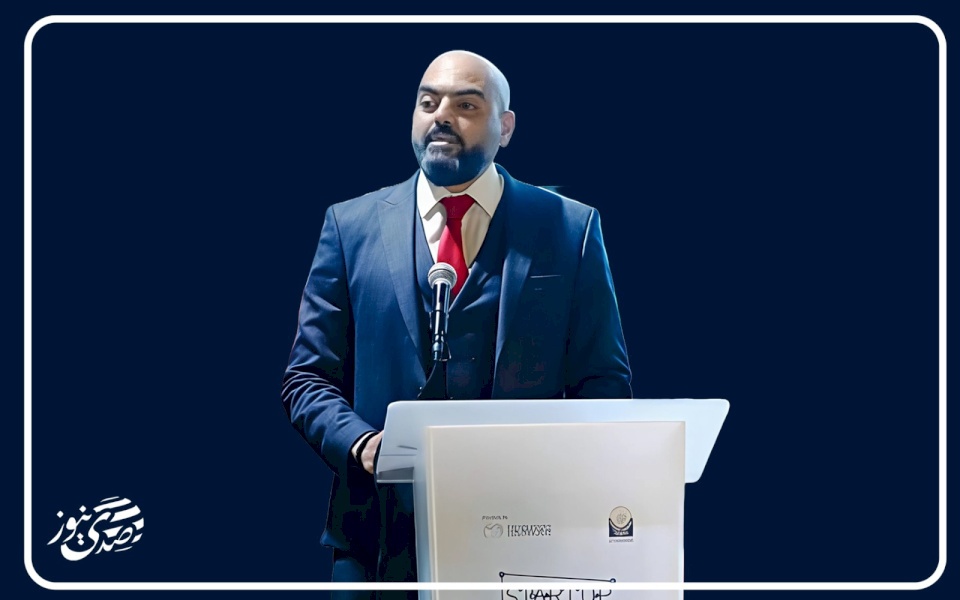
Marwan Turns the Tables on the Sorcerer
Israeli National Security Minister Itamar Ben-Gvir did not expect that his provocative step of storming the cell of Palestinian prisoner Marwan Barghouti would turn into a media weapon against him, and that the scene he intended to use to enhance his image before his extremist right-wing audience would instead become a visual testimony to the cruelty of the occupation and a window that brought back to the forefront the case of one of the most prominent leaders of the Palestinian prisoners' movement.
In the video broadcast by Kan 11, Barghouti appears with a thin body and facial features worn from long imprisonment, in a shocking image for his family and for all who know him. The scene was not just a routine visit by an Israeli official, but a display of force accompanied by direct threats, as Ben-Gvir told Barghouti: "Whoever kills our children or our women, we will erase them; you will not defeat us." These words were carefully chosen by the extreme right-wing minister, but they revealed more than they concealed, showing the inability to break the will of the prisoner who is serving five life sentences and an additional forty years since 2002.
Ben-Gvir, who built part of his popularity on a discourse of hatred and incitement against Palestinians, was trying to convey a double message: to his Israeli audience that he is "tightening his grip" on the prisoners, and to the prisoners themselves that the era of leniency is over. However, what actually happened was that the scene slipped out of control and spread widely among Palestinians, Arabs, and even in international circles, turning into a reminder of a national symbol with a significant place in the Palestinian collective consciousness.
The scene that Ben-Gvir tried to create, without realizing it, is reminiscent of what happened with Nelson Mandela in the prisons of the apartheid regime in South Africa. Back then, the authorities tried to portray him as a defeated prisoner, isolated from his people, only to later discover that they had inadvertently given him the image of a living legend that transcended the walls of prison.
For many Palestinians, Marwan Barghouti is "the Mandela of Palestine" and a symbol of the struggle for freedom and dignity against a colonial system that seeks to crush the spirit before the body. Ben-Gvir, with his rhetoric full of threats and hatred, has reproduced the mistake of oppressive regimes throughout history: the belief that public repression establishes authority, while in reality, it reveals the power's fear of an unarmed man.
He has failed because he did not understand that when a political symbol is targeted in this way, it transforms from a political figure into a historical icon, and that images of a thin body and pale face can be stronger than any fiery rhetoric, as they present the truth to the people unvarnished: here stands the occupation, and here stands the one who confronts it, and the difference between them is the difference between the power of arms and the power of will.
The image that Barghouti presented – despite its indicators of physical suffering – revived his struggle image and reminded us of a long history of confrontation inside and outside the prisons. For the man who was arrested in April 2002 and whom Israel accused of being responsible for operations carried out by armed groups affiliated with Fatah, has remained steadfast in his positions and has refused any compromise on Palestinian national rights.
The irony is that the video Ben-Gvir intended to show his victory has turned into a platform showcasing the suffering of Palestinian prisoners. Barghouti's pale features and low weight were not read as evidence of weakness, but rather as proof of resilience and endurance despite the starvation policy that the minister himself boasted about last July before the Israeli Supreme Court. Here was the biggest media mistake: instead of embarrassing the prisoner or undermining his symbolism, Ben-Gvir contributed to deepening empathy with him, even among those who did not closely follow his case.
Furthermore, the scene opened a new discussion about the conditions of prisoners in Israeli jails, where human rights organizations talk about an unprecedented deterioration in detention conditions since Ben-Gvir took office at the end of 2022, from reducing visits to decreasing food quantities, to restrictions on the simplest human rights. Thus, the video was not just a personal scene between a minister and a prisoner, but a document condemning an entire policy.
In the end, what Ben-Gvir did was not a victory, but a painful reminder that the occupation, no matter how severe its repression, cannot erase symbols from the memory of peoples. On the contrary, it may give them a new opportunity to emerge, as happened with Marwan Barghouti, who emerged from his narrow cell to the screens of millions, not just as a victim, but as a leader whose steadfastness continues to perplex his adversaries. Ben-Gvir wanted to turn the page on Marwan; instead, he wrote a new chapter in his story, titled: When the Sorcery Turns on the Sorcerer.

Gaza: Between the Dilemma of Rescue and the Entitlement of National Liberation

Their Positions Hide Their Hatred for Gaza

Their goods were returned to them

Between Exaggeration and Reality: Is the Gap Between Israel and the United States Really W...

The Assault in Jaffa and the Importance of Responding to It...

Replacing Palestinian Imports ... A Step Towards Enhancing Economic Resilience

Donkeys and Settlers: A Call to Torah Narratives

